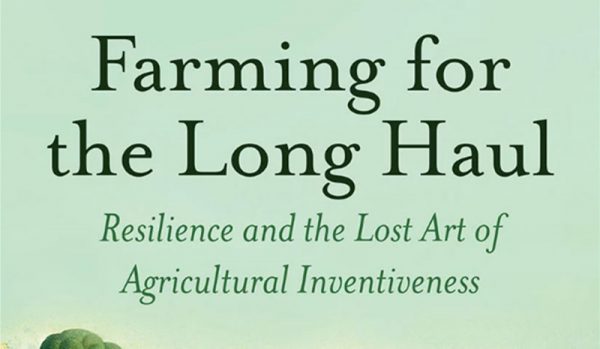
As the world appears poised to change in dramatic ways over the next century—especially considering the shifting climate and rapidly growing population—it becomes imperative to examine the resiliency of our agriculture and ask the question: Will the type of farming we do today prepare us for a significantly different tomorrow?
The answer, as Michael Foley lays out in great detail in his new book Farming for the Long Haul: Resilience and the Lost Art of Agricultural Inventiveness (Chelsea Green Publishing), is “maybe not.”
Wrong vs. Right
Much of the developed world farms in ways that rely heavily on oil, water and other mined inputs. These resources will probably become scarce or prohibitively expensive over the next century and maybe sooner than some predict.
Moreover, many people farm in ways that are not financially or environmentally sustainable. This compounds the problem. Farmers either can no longer make their living growing food or their land is increasingly unproductive.
In many cases it’s both. So as inputs become more out of reach, and the land begins to provide less in the way of food or finance, farmers themselves will become another scarce resource.
I don’t mean to project a sentiment of pessimism on this book. Foley’s writing is smart and realistic, and it’s also very hopeful.
Not only does he give solutions. He also gives examples of farmers, co-ops and other entities now successfully implementing replicable solutions.
He points to Singing Frogs Farm in Sebastopol, California, which grosses more than $100,000 per acre growing vegetables without tillage. Gabe Brown regeneratively farms thousands of acres in North Dakota. He’s another great example cited as the potential for farmers to set the course for a vibrant farm future.
Our Table, a farmer co-op in Oregon, is one of many examples of how farmers can band together and have more control over their market and their income.

It’s History
However, the successful examples Foley draws from are hardly all contemporary. Much of this book utilizes history to account the rise and fall of certain civilizations.
These cycles in so many ways have revolved around the types of agriculture used in certain cultures.
When civilizations abused and depleted the soil, they soon fell. But when civilizations cared for and treated the soil as lifeline to the health and prosperity of the civilization? Those groups survived for thousands of years in some cases.
Through this lens of history as Foley presents it, you see how intimately linked the health of the soil and the health of the civilization truly are.
In the end, this book feels critical. It’s the kind of book farmers and citizens alike should read and regularly revisit to examine the viability of our food systems, our forestry, our water use, of everything that constitutes agriculture, and everything—from environment to health—that agriculture can reconstitute.
Farming for the Long Haul aggregates some of the greatest ideas and practices—modern as well as ancient—and paints them not as idealisms, but possible solutions to forthcoming shifts in markets and environment. And Foley should be proud. Farming for the Long Haul is a brilliant work, well-written and much needed—needed for today, needed for yesterday, and needed at our bedsides eternally not just to avert a catastrophic depression of our agricultural systems and culture, but to forever achieve a resilient, adaptive tomorrow.




